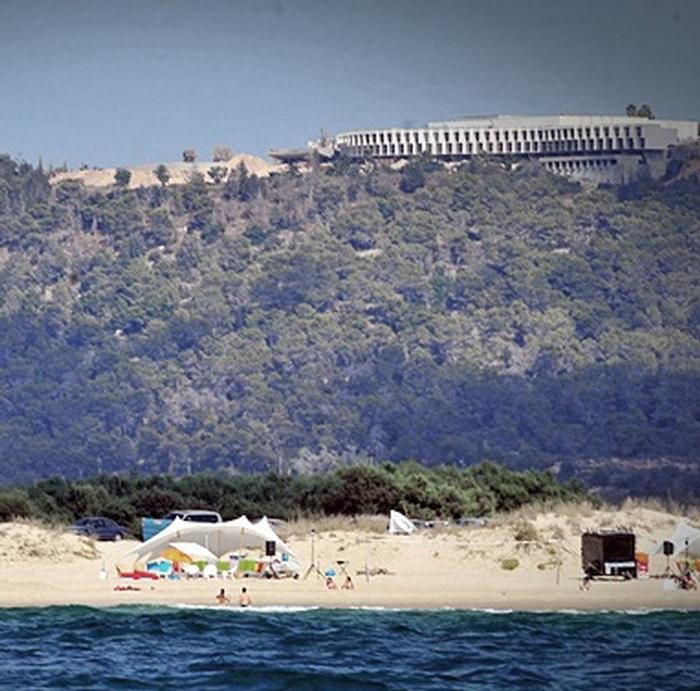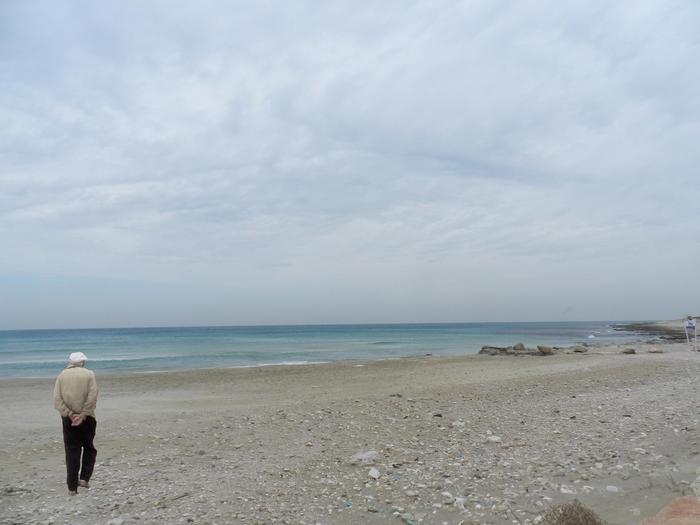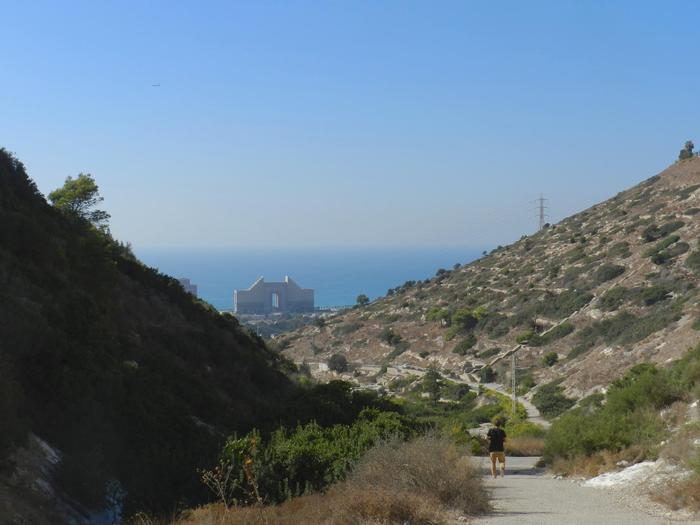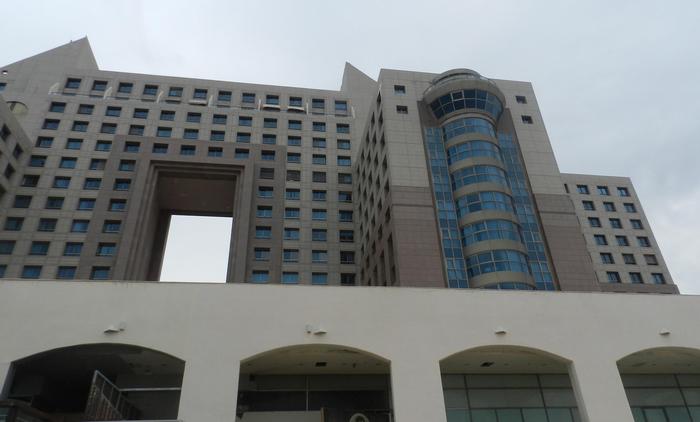[ID:901] Somewhere I can call HEALTHYIsrael Growing awareness to healthy life style and dramatic changes in every-day life obligates the architecture field to be adapted and discussed the issue of planning a healthful environment. This paper examines this subject throw declaration and comparison of two different places that inspect that issue. I am from Israel and so are the two examples that will be discussed. Israel is a country that is bordered by the sea from the west and blessed with a beautiful coast-line. While searching for a place I can call 'healthy', it was natural for me to go to the beach to think and get some inspiration. I knew that the waves and sunlight of the beach will help me realized how I can define what is healthy for me. There, between the grains of sand I found my answer as a figure of 70s’ year's old man. The man was staring at the sea waves, his face had nostalgic expression. The wrinkles beside his eyes implied long-life experiences, and made me realized it’s a person I must talk to. Converting with the man, and asking him leading questions made me thinking about the early years of my country. He told me about the early 60's, when he was a seaman sailing along the Mediterranean Sea fishing and trading. He recalled the time when the land started to 'grow' buildings, and how the skyline changed every time he made it to shore. Then he told me about "Mivtahim". At the early 50`s the Israeli government legislated the law of annual vacation – a law that required employers to give their employees a short vacation once a year. This law was the starting point of establishing the 'health-care' resorts around Israel. The health resorts system is an Israeli invention based on the model of health resorts that were built in soviet Russia. The main purpose of the health resorts was being a vacation place, somewhere to relax, and a destination to intra-country tourism before Israel had luxurious hotels. The health resorts system was a big achievement to the new- developed social state of Israel, and was crucial to the physical and minded health of the industry employees. One of those resorts was the "Mivtahim house" in Zichron-Yaacov that was designed in the late 60's by the architect Zeev Rechter. The "Mivtahim" building is a beautiful, bare concrete structure that is placed on top of the Carmel Mountain and is overreached by the Mediterranean Sea and the green fields of the Kibbutz that are scattered about its slopes. Like most of the Israeli health resorts, Mivtahim was built in a mountainous region, by the sea, because of the therapeutic elements this environment provides. The bare concrete characterizes the brutally architecture that was common those days, and symbolized the brutalism of the body and soul as a clean-simple-humble & healthy. The old man loves that building although he never went inside. The visual sight of the building merging with the Carmel mountain with a quit, harmonic way, made the sea-man thinking about it and appreciate it, more than any other grandiose structure viewed from the salty water of the sea.
It is clear to me why the man mentioned Rechter`s design as a positive place to remember. It presents a magnificent integration between the natural topography, the man-made structure and the clear sky-line, in a most sensitive and organic composition- "Basically it creates a new element at the view who already been there". Now, when I am familiar with the building inside and out, I can defiantly call it a healthy place. Even by just reading Rechter plans, his concern about the positive experience of the future users is realized. Programmatically, The concrete columns that hold the 'Mivtahim' building above the ground and the minimalistic ground plan allow for a wide surface, suitable for social gatherings, gazing upon the sea view and the green surroundings, or even just relaxing under the sun-lit sky. Rechter planned the broad building with a special façade, allowing every one of the rooms to have a private balcony that overlooks the sea. Framing the view was important architectural element that implemented by relating the façade as a textile-materially wall, with own volume and clear openings that sliced it apart. In a few simple words, the idea was to give the residents an opportunity to find peace and regain their strength by the virtues of the calm and quiet place in the resort. "Well, that`s a place I can call healthy", I said, and the old man laughing, saying "it defiantly is. There are only few places I can point off, who giving me the same warm-positive feeling. There are a lot more places that creating entirely opposite feeling. Although it is been a long time since I sailed away, there is one, relatively new monument that is still ruins my sea experience." I was curious. "Which one is it?" I asked, and he replayed: " I sure you know it, it's the Carmel Beach Towers of course". Stretching along the same coast line, just about 30 km north of the "Mivtahim house", I found my example of un-healthy architecture. This place opposes everything I know and believe about how architecture should be. The structure is a 16 stories skyscraper that is called “Carmel Beach Towers”, and is located by the Haifa beach amidst the sea sand, entirely inconsiderate of its surroundings. The structure is composed of two glass and marble triangular frames that block all view and public access to the sea. Although featuring 240 luxurious apartments, overly spacious lobby and even a highly equipped gymnasium, the structural monster opponents any quality of life to its residents. Even though it is quit new building in the Haifa sky line, the old man had a lot to say about those towers. The dialog between the old man & I made me struggle with the question of what make an environment `healthy` or 'un-healthy', and what makes a building or an environment be 'ill' . There are, on my opinion, four points to mention and achieve, on the way of healthy planning. The most important among them is the contact with nature. Nature contact may take many forms in the built environment, such as plantings in buildings, views out of windows, community gardens, and parks and green spaces. The benefits of such contact expressed mainly by preventing stress and improving recovery from illness and surgery. Second factor relied on the site plan itself, which encourages physical activities. An architectural plan that cause people to take the stairs, walking in the park or taking the bicycles to work, both prevent and treat depression, and helping loosing and keeping healthy body weight. The third factor going the same way and observing the urban planning and how it allows approach to healthy food, clean air and water, fair access to livelihood, education, and resources. The fourth factor deals with the human factor, and how some places draw people together and some are not. A place, by its design, can strengthening or weakens the social fabric of a community, which enhance the development of social capital. Social capital affects health through the exchange of network-based resources, collective action, and the enforcement of social norms for health behaviors. The built environment can affect social capital by providing opportunities for formal and informal social interactions and promoting investment in a shared space. After that, I can honestly announce the Carmel Beach Towers as 'ill' in several ways. The old man & I tried to imagine the lives of the towers' residents. For the people that live there, the towers must caused social segregation by separating them both physically and socially. The design creates the most luxurious and equipment apartments so one should not leave his four walled place if he not desired to. The location of the towers, in comparison to the rest of Haifa, shows the distinction both physically and typologically from the rest of the city, that caused the towers' residents be like a visitors and not a true residents of the city. The prestige lives the 'Carmel Beach Towers' are aimed to provide, enforce people to maintain tense and hectic lives lacking of feelings like trust or friendship with the city beneath them. Not only do the towers worsen the lives of their residents, they also pollute the view of passers-by, blocking the magical glance to the sea. The 'green' organizations around Israel did a lot of actions trying to prevent the approval of this towers' plan. After protesting and filing a prosecution they failed in their task, and the buildings were built. In what may seem like a last attempt to integrate the towers in the environment, the architect designed a rectangular opening in the center of the monument. This ridiculous attempt barely allows any view at all to pass through that crack, and ensure us that the buildings ‘know’ its negative impact. Also, the strategic mistake of approving and built this tower is well known today, and that is why the rest of the plan that draw up four more similar towers is now suspended. So, what can we do now? How can we make un-healthy place to a healthy one? Obviously, if I could go back in time, joining the Israel 'green' organizations that protested against those towers, and make a different, I would. Furthermore, if destroying the building and start all over was a realistic option, I would have recommended it. Currently, if the main purpose is to benefit with the general population, it is a must, on my opinion, doing a public- participation process, which demonstrates the true needs and opinions of the people. Community engagement in design and planning is a critical element of efforts to improve the built environment because it ensures that concerns of community residents are considered in projects and plans, strengthens local partnerships, and builds social capital. Searching for my own idea of what should be the positive and healthy future of the Carmel Beach Towers I decided to go back and check the state of the "Mivtahim house" that stand to me as a positive example. Nowadays, "Mivtahim" house is undergoing programmatic transformation by converting it to boutique hotel. The term of 'recuperation' that stand as a flag for the early health resorts cannot be in use today because it's implies a need to recovery, like something isn't right. Today the health resorts are being changed to hotels and the commune terms became leisure and enjoyment. With that saying, I am suggesting that the Carmel beach towers will become the modern health resort that the area is needed for. I imagine a programmatic transformation that will affect all of its' surrounding, and will benefit the best from the location between the city and the shore. The building will transform to a new, modern, public, health- care resort, and could be a place that the Haifa population will be proud of, and stop calling it "constructive monster" like they do today. The original health resorts like "Mivtahim" that were discussed at the beginning have not adapted to the time changes, and were left behind when the tourism industry of the big cities developed. Now we have an opportunity to utilized modern structure that is placed in magnificent area to the public good. Making this strategic place accessible by connecting it to the public transport network, and utilized its geographic location beside the sea shore, is a must. Researchers suggest that 'blue space', like the sea, can reduce stress and have a positive effect on wellbeing, and so I think that Mediterranean countries such as Israel should know how to use the coast as a cure environment. The vital relationships that exist between architecture and the social, cultural, and natural environment should make planners think about creating a healthy environment with every step they take. At the early years of my country the need for health resorts came from the poverty and misery of the immigrants that built this country. Today, in the digital, web–connected world that we live in, we must always remember that we depended on the organism which is our body and mind. Being healthy it is not just nourish our body with healthy food, water and clean air , it is also giving it time to relax, travel, think, admire and love. Planning environment that support this healthy life style is basically the main roll of the architect. I went back to the beach and presented my idea to the old man. I described to him my vision and ideas for the problematic spot along Haifa coast line. The old man listened carefully and didn't say a word. When I was done, he just said: "the sea will see more then I can imagine, I will not be here for much longer, so it's your generations' responsibility to create it a beautiful city to watch."
If you would like to contact this author, please send a request to info@berkeleyprize.org. |




